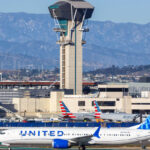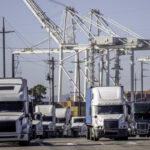
The re-introduction of the SHIPS for America Act is the latest in a growing list of regulatory developments adding complexity and cost to the business of importing goods into the United States.
In an already turbulent year for ocean freight, the situation facing global carriers and their customers just became even harder to navigate.
From USTR Tariffs to Shipyard Surcharges
Back in February, the Office of the United States Trade Representative (USTR) unveiled plans to impose significant fees on Chinese shipping companies, including a proposal to penalise carriers based on how many of their new vessels were being built in Chinese yards.
That provision was dropped in the April revision, to the relief of many in the industry. But any hopes that this signalled a softer approach were quickly dashed.
The SHIPS for America Act – a separate initiative originally tabled in December – has now been reintroduced, and it does include measures targeting order-books tied to certain Chinese shipyards. These new fees apply to both Chinese and non-Chinese carriers, depending on where their fleets are built or maintained.
A New Layer of Charges
- A $5 per ton fee would apply to ships owned or operated by Chinese carriers, or registered in China.
- The same $5 per ton fee would also apply to non-Chinese carriers if more than 50% of their current order-book is being built at a “shipyard of concern” – currently defined as those owned by China State Shipbuilding Corporation.
- A $3.5 per ton fee would apply to carriers with between 25% and 49% of newbuilds in those yards.
- On top of that, a $1.25 per ton penalty would apply to any operator with an existing fleet where 50% or more of ships were built or repaired in a “yard of concern.”
Only the highest relevant category would apply to each vessel, but these charges would be in addition to the incoming USTR port fees. Under the USTR proposal, Chinese carriers face a $50 per net ton capacity fee at US ports from October, rising annually to $140 by 2028.
The Carrier Conundrum
We can use the the 14.5K TEU COSCO vessel ‘Denali’ to illustrate the potential financial impact. Owned and operated by COSCO and built in China the ‘Deanli’ has a net tonnage of 84,300 and would incur $4.2 million in USTR fees per US rotation, plus $0.4 million under the SHIPS for America Act.
That’s $4.6 million per voyage in added cost.
COSCO is a member of the Ocean Alliance, which also includes CMA CGM, Evergreen and OOCL. Realigning their fleets to minimise USTR exposure might involve deploying more CMA CGM and Evergreen ships to US routes. But the SHIPS for America Act complicates this strategy.
CMA CGM, for instance, has over 35% of its order-book with CSSC yards meaning its vessels would now attract $3.5 per ton charges.
For alliances, there may be no “clean” workaround. In some cases, carriers may be forced to choose the least costly path rather than a fee-free one.
Implications for Shippers
Carriers will undoubtedly seek to pass on some or all of these costs through general rate increases, new surcharges, or less favourable contract terms.
There’s also a longer-term implication.
Section 415 of the SHIPS for America Act would require that, starting five years after enactment, 1% of all US-bound cargo from China (by tonnage) be carried on US-built ships, increasing annually to 10%. Shippers failing to comply would be fined the difference between using a US-built ship and a lower-cost foreign-flagged vessel.
While operational details remain unclear, the combination of direct fees, structural restrictions, and new compliance requirements could have a profound effect on sourcing, carrier selection, and trade lane strategy.
In a time of regulatory upheaval, selecting the right carrier, contract and routing has never been more critical. Whether you need strategic advice, cost modelling, or access to compliant, resilient capacity, Global Forwarding is here to help.
EMAIL our VP, Adam Davies, today to learn how you can de-risk your supply chain.





